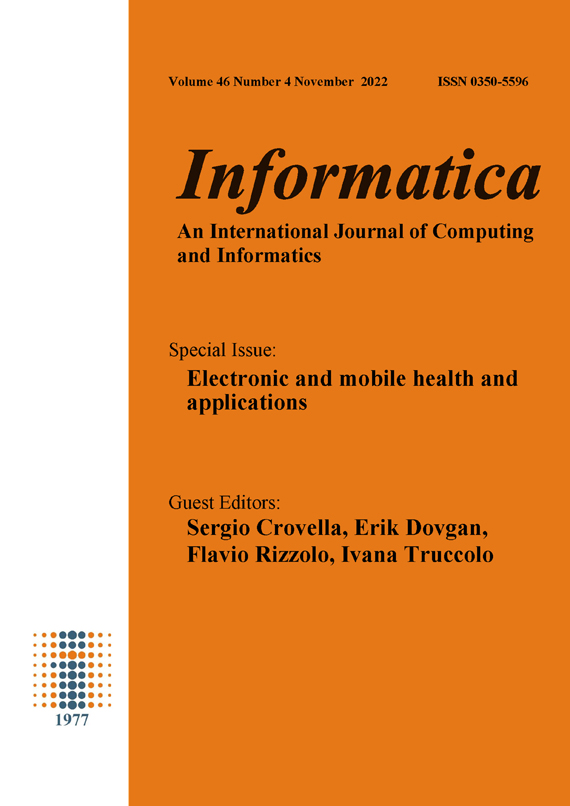A novel method for multiple object detection on road using improved YOLOv2 model
DOI:
https://doi.org/10.31449/inf.v46i4.3884Abstract
Artificial Intelligence has a wide range of uses. AI is currently solely used in the areas of object identification and speech recognition. Object detection is a branch of machine vision and image processing that deals with instances of a certain class of semantic items. One of the most significant habits of object detection in intelligent transportation schemes is vehicle detection. Its aim is to extract clear-cut vehicle-type information from photographs or videos of automobiles. Object detection is critical in self-driving cars. A fully convolutional network (FCN) is employed in sophisticated driver assistance systems for high performance and quick object identification (ADAS). A novel vehicle detection model employing YOLOv2 is presented to tackle the difficulties of prevailing vehicle detection, such as the absence of vehicle-type recognition, stumpy detection accuracy and sluggish speed. The detection model is trained using the VOC and COCO datasets, and the detection enactment is evaluated quantitatively using KITTI training pictures. In addition, the performance of the YOLOv2 model was compared to that of prior models.References
References
Bhavana C. Bendale, et al., “Moving Object Tracking in Video Using MATLAB”, International Journal of Electronics Communication and Soft Computing Science and Engineering ISSN: 2277-9477, Vol 2, Issue 1, 2012.
Gawande P.V, Lokhande S.V “Improving efficiency of school bus routing using AI based on bio inspired computing: A Survey”, International Research Journal of Engineering and Technology (IRJET) e-ISSN: 2395-0056 ,p-ISSN: 2395-0072, Volume: 05 Issue: 03, 2018.
Gerónimo, D., et al., “Survey of Pedestrian Detection for Advanced Driver Assistance Systems”, IEEE Transactions on Pattern Analysis and Machine Intelligence, doi:10.1109/tpami.2009.122, 2010.
Huieun Kim, et al., “On-road object detection using Deep Neural Network”, IEEE International Conference on Consumer Electronics-Asia (ICCE-Asia), DOI: 10.1109/ICCE-Asia.2016.7804765, 2016.
Hui-Lee Ooi, et al., “Multiple Object Tracking in Urban Traffic Scenes with a Multiclass Object Detector”, published on 13th International Symposium on Visual Computing (ISVC), Cornal University, arXiv:1809.02073 [cs.CV], 2018.
J. Redmon and A. Farhadi. “YOLO9000: Better, Faster, Stronger” Proceedings of the IEEE Conference on Computer Vision and Pattern Recognition, 2017.
Marcus A. Brubaker, et al., “Video-Based People Tracking”, hand book of ambient intelligence under smart environments, pp 57-87, 2010.
Mendes, et al., “Vehicle Tracking and Origin-Destination Counting System for Urban Environment” in proceedings of the International Conference on Computer Vision Theory and Applications, 2015.
Minsung Kang, Young-Chul Lim, “High Performance and Fast Object Detection in Road Environments”, Seventh International Conference on Image Processing Theory, Tools and Applications (IPTA), DOI:10.1109/IPTA.8310148, 2017.
M. Schreiber, et al., “Vehicle localization with tightly coupled GNSS and visual odometry”, in Proc. IEEE Intelligent Vehicles Symposium, 2016.
Naghavi, S. H., et al., “Integrated real-time object detection for self-driving vehicles” 10th Iranian Conference on Machine Vision and Image Processing (MVIP). doi:10.1109/iranianmvip.2017.834234, 2017.
Nikhil Yadav, et al., “Comparative Study of Object Detection Algorithms”, International Research Journal of Engineering and Technology (IRJET), e-ISSN: 2395-0056, p-ISSN: 2395-0072 , Vol 4, 2017.
O. Russakovsky, et al., “ImageNet Large Scale Visual Recognition Challenge”, in computer vision. vol. 115, no. 3, pp. 211–252, 2015.
S. Ren, K. He, et al., “Faster R-CNN: Towards Real-Time Object Detection with Region Proposal Networks” Nips, pp. 1–10, 2015.
Tang, C., et al., “The Object Detection Based on Deep Learning”, 4th International Conference on Information Science and Control Engineering (ICISCE), DOI:10.1109/icisce.2017.156, 2017.
Yiwei Wang, et al., “Moving Object Tracking in Video”, in proceedings of 29th applied imagery pattern recognition workshop, ISBN 0-7695-0978-9, page 95, 2000.
Downloads
Published
Issue
Section
License
I assign to Informatica, An International Journal of Computing and Informatics ("Journal") the copyright in the manuscript identified above and any additional material (figures, tables, illustrations, software or other information intended for publication) submitted as part of or as a supplement to the manuscript ("Paper") in all forms and media throughout the world, in all languages, for the full term of copyright, effective when and if the article is accepted for publication. This transfer includes the right to reproduce and/or to distribute the Paper to other journals or digital libraries in electronic and online forms and systems.
I understand that I retain the rights to use the pre-prints, off-prints, accepted manuscript and published journal Paper for personal use, scholarly purposes and internal institutional use.
In certain cases, I can ask for retaining the publishing rights of the Paper. The Journal can permit or deny the request for publishing rights, to which I fully agree.
I declare that the submitted Paper is original, has been written by the stated authors and has not been published elsewhere nor is currently being considered for publication by any other journal and will not be submitted for such review while under review by this Journal. The Paper contains no material that violates proprietary rights of any other person or entity. I have obtained written permission from copyright owners for any excerpts from copyrighted works that are included and have credited the sources in my article. I have informed the co-author(s) of the terms of this publishing agreement.
Copyright © Slovenian Society Informatika








